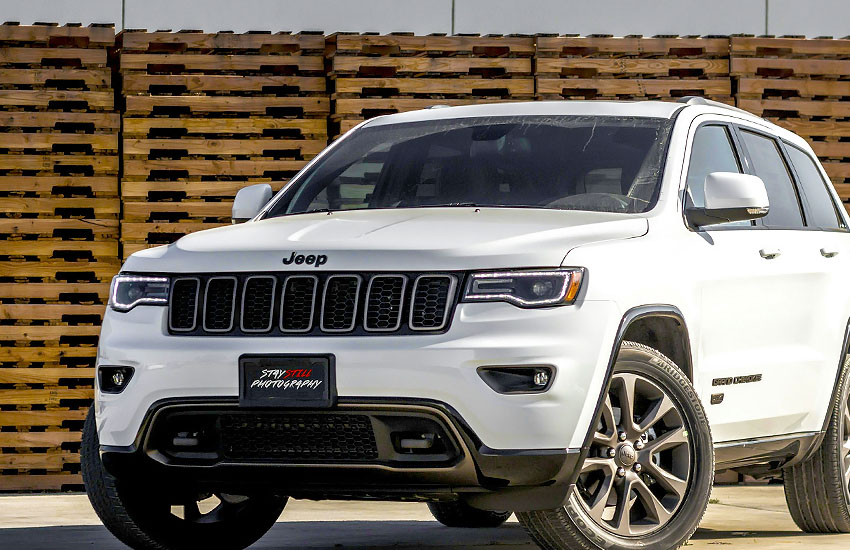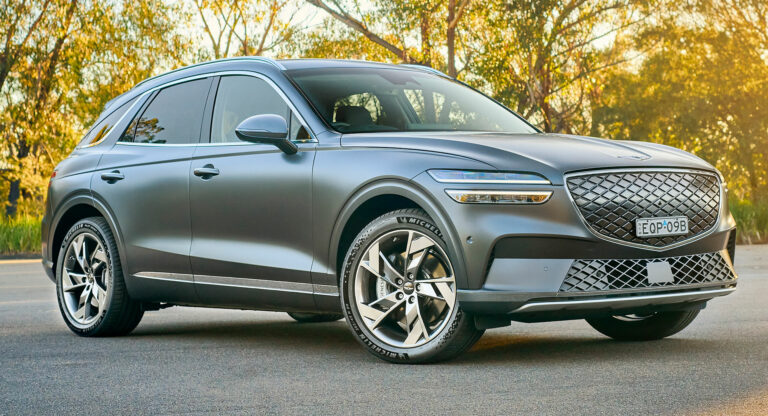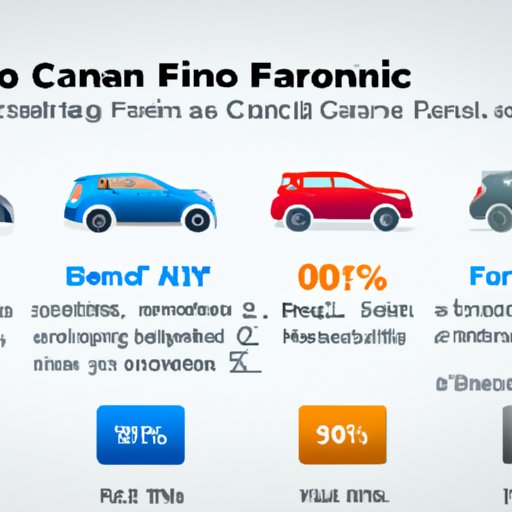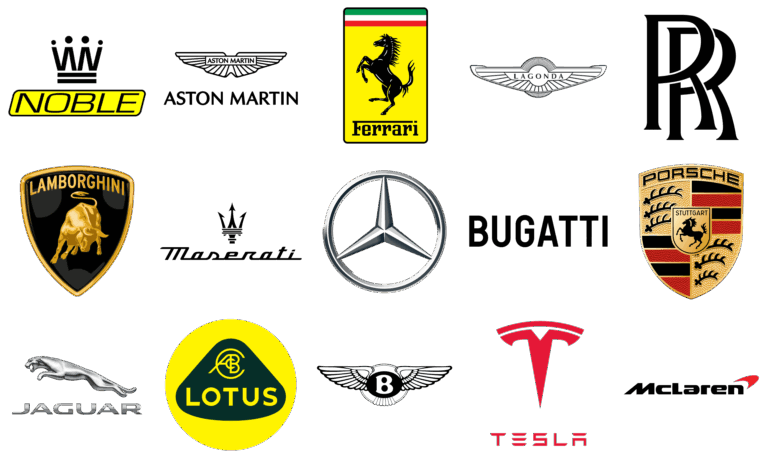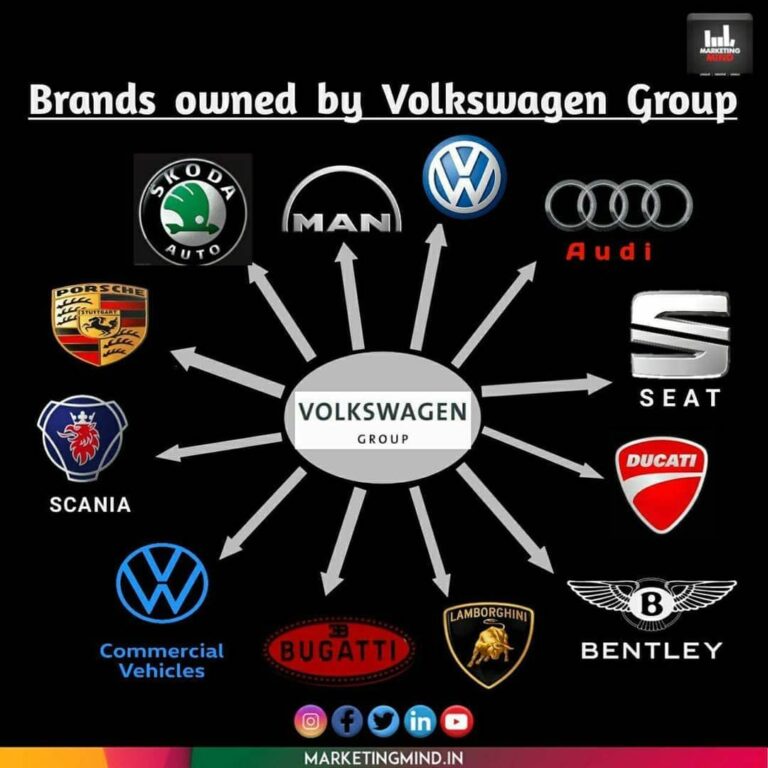Foreign Car Brands: Navigating the Global Automotive Landscape
Foreign Car Brands: Navigating the Global Automotive Landscape cars.truckstrend.com
In an increasingly interconnected world, the concept of a "foreign car brand" has evolved beyond a simple geographical distinction. While traditionally referring to vehicles manufactured outside one’s home country, it now encompasses a vast tapestry of engineering philosophies, design aesthetics, and cultural influences that shape the global automotive market. From the precision engineering of Germany to the reliability of Japan, the value proposition of Korea, and the luxury of the UK, foreign car brands offer consumers an unparalleled diversity of choice, driving innovation and competition across continents. Understanding these brands is not just about identifying their country of origin; it’s about appreciating their unique strengths, their contributions to the automotive industry, and how they cater to a myriad of consumer needs and preferences worldwide.
This comprehensive guide delves into the multifaceted world of foreign car brands, exploring their defining characteristics, the benefits they offer, crucial considerations for prospective buyers, and practical advice for navigating this dynamic market.
Foreign Car Brands: Navigating the Global Automotive Landscape
The Global Tapestry of Automotive Manufacturing
The automotive industry is a truly global enterprise, with manufacturing plants and design studios spread across every habitable continent. While a brand might originate in one country, its production can be highly internationalized, with components sourced globally and vehicles assembled in various regions to serve local markets. This complexity adds layers to the definition of "foreign," but at its core, it refers to brands whose heritage, primary design philosophy, and corporate headquarters reside outside the consumer’s immediate country.
The major powerhouses in the foreign car brand landscape can generally be categorized by their regional origins, each bringing distinct characteristics to the table:
- Asian Powerhouses (Japan & South Korea): Dominated by brands like Toyota, Honda, Nissan, Mazda, Subaru, Suzuki, Mitsubishi, Hyundai, Kia, and their luxury sub-brands (Lexus, Acura, Infiniti, Genesis). These brands are widely celebrated for their exceptional reliability, fuel efficiency, strong resale values, and user-friendly technology. Japanese manufacturers, in particular, pioneered concepts like "lean manufacturing" and "just-in-time" production, revolutionizing global industry practices. Korean brands, while newer to the global stage, have rapidly gained market share through aggressive design, impressive warranty programs, and a compelling value proposition.
- European Engineering Excellence (Germany, UK, Italy, Sweden, France): This category encompasses a wide spectrum, from the precision and performance of German giants like Mercedes-Benz, BMW, Audi, Volkswagen, and Porsche, to the luxurious heritage of British marques such as Jaguar, Land Rover, Aston Martin, Rolls-Royce, Bentley, and McLaren. Italian brands like Ferrari, Lamborghini, Maserati, and Alfa Romeo embody passion, style, and high performance, while Swedish Volvo and Polestar are synonymous with safety, minimalist design, and sustainability. French brands like Peugeot, Renault, and Citroën, though less prevalent in North America, are significant players globally, known for unique design, comfort, and practical innovation.
- Other Notable Regions: While the primary focus often remains on Asia and Europe, other regions contribute significantly. For instance, in many markets, even American brands like Ford or Chevrolet would be considered "foreign" if the perspective is from, say, Germany or Japan.

Defining Characteristics and Strengths by Origin
Each major region of origin has cultivated a distinct reputation based on its core automotive philosophies:
- Japanese Brands: Renowned for bulletproof reliability, low cost of ownership, innovative hybrid technology, excellent fuel economy, and practical, ergonomic designs. Their vehicles often lead in consumer satisfaction surveys for longevity and dependability.
- German Brands: Synonymous with engineering precision, robust build quality, exhilarating driving dynamics, advanced technology, and luxurious interiors. They often set benchmarks for performance, safety, and sophisticated driver-assistance systems.
- Korean Brands: Known for offering exceptional value, extensive warranties, striking contemporary designs, and rapid advancements in infotainment and connectivity features. They have successfully shed their budget-brand image to compete directly with established players.
- Swedish Brands: Volvo, in particular, is a global leader in automotive safety innovations, boasting minimalist yet elegant Scandinavian design, comfortable interiors, and a growing focus on electrification and sustainability.
- Italian Brands: Celebrated for their unparalleled style, emotional appeal, raw performance, and rich racing heritage. These brands often produce some of the world’s most beautiful and coveted sports cars and luxury vehicles.
- British Brands: Characterized by bespoke craftsmanship, luxurious appointments, aristocratic heritage, and often, a blend of traditional elegance with modern performance capabilities, particularly in their luxury and sports car segments.

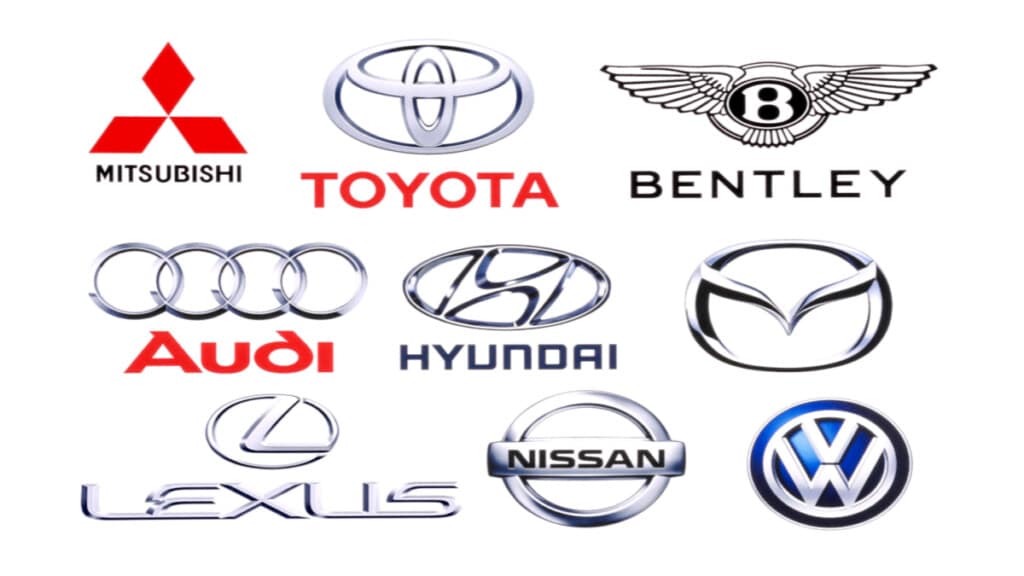
Benefits of Choosing a Foreign Car Brand
Opting for a foreign car brand offers a plethora of advantages that cater to diverse consumer needs:
- Wider Choice and Diversity: Foreign brands significantly expand the range of available models, body styles, and powertrains, ensuring that almost every niche and preference is met.
- Specialized Engineering and Design: Each region brings its unique design philosophy and engineering prowess, offering distinct driving experiences and aesthetic appeals that might not be available from domestic brands.
- Access to Advanced Technology: Many foreign brands are at the forefront of automotive innovation, introducing cutting-edge safety features, infotainment systems, and powertrain technologies (e.g., advanced hybrids, electric vehicles, autonomous driving capabilities) that often trickle down to other markets.
- Strong Reputation for Specific Attributes: Whether it’s the legendary reliability of Japanese cars, the performance and luxury of German vehicles, or the safety focus of Swedish brands, consumers can leverage these established reputations to find a vehicle that prioritizes their key concerns.
- Competitive Pricing Across Segments: While some foreign brands occupy the luxury or performance segments, many others offer highly competitive pricing in the mainstream market, providing excellent value for money alongside quality and features.
Important Considerations When Buying a Foreign Car
While the benefits are compelling, potential buyers should consider several factors to ensure a smooth ownership experience:
- Maintenance and Parts Availability: For mainstream foreign brands (e.g., Toyota, Honda, VW, Hyundai), parts are generally readily available and maintenance costs are comparable to domestic counterparts. However, for niche luxury or exotic brands, parts can be more expensive and require specialized mechanics. Always research the local dealership and independent service network for your chosen brand.
- Resale Value: This varies significantly by brand and model. Japanese and German brands often hold their value well due to strong reputations, while others might depreciate more rapidly. Consult resources like Kelley Blue Book or Edmunds.
- Insurance Costs: Performance-oriented or luxury foreign vehicles might incur higher insurance premiums due to their higher repair costs or greater theft risk.
- Dealership Network and Service Quality: A robust dealership network ensures easier access to routine maintenance and warranty work. Research local dealership reviews to gauge service quality and customer satisfaction.
- Cultural Fit and Personal Preference: Some foreign brands have distinct driving dynamics (e.g., firmer German suspension vs. softer Japanese ride) or interior layouts that might appeal more or less to individual drivers. Test driving is crucial.
- Warranty Differences: While most major foreign brands offer competitive warranties, it’s essential to understand the terms and coverage, as they can vary by region or specific model.
Tips for Researching and Purchasing Your Foreign Car
Making an informed decision requires thorough research and a systematic approach:
- Define Your Needs and Budget: Before looking at brands, determine your priorities: seating capacity, fuel efficiency, performance, safety features, technology, and, crucially, your realistic budget for purchase and ongoing ownership costs (fuel, insurance, maintenance).
- Research Specific Models and Trims: Once you have a shortlist of brands, delve into specific models. Read professional reviews from reputable automotive publications and, importantly, owner reviews to get real-world perspectives on reliability and satisfaction.
- Test Drive Thoroughly: Never buy a car without a comprehensive test drive. Pay attention to comfort, visibility, handling, acceleration, braking, and how the infotainment system works. Try to test drive on various road conditions if possible.
- Consider Certified Pre-Owned (CPO) Options: CPO programs from foreign brands offer a great way to acquire a high-quality, late-model vehicle with warranty coverage, often at a significant saving compared to new.
- Factor in Long-Term Ownership Costs: Beyond the sticker price, consider fuel efficiency, estimated maintenance costs (check online forums or independent mechanic quotes), insurance premiums, and potential depreciation.
- Don’t Be Swayed by Brand Snobbery Alone: While brand reputation is important, focus on the specific model’s features, reliability, and how it fits your lifestyle, rather than simply buying for the badge.
Challenges and Solutions
While foreign car brands offer many advantages, potential challenges exist, though most have practical solutions:
- Perceived Higher Maintenance Costs: This is often a myth for mainstream brands. For luxury or performance models, costs can be higher, but researching reliable models and finding reputable independent mechanics specializing in specific brands can mitigate this. Many common parts are now widely available.
- Parts Availability for Niche Models: For very rare or older foreign models, finding specific parts might require ordering from overseas, leading to delays and higher costs. This is less of an issue for high-volume brands.
- Complexity of Modern Systems: Today’s cars, foreign or domestic, are highly complex. Rely on the expertise of dealership service centers for specialized diagnostics, or seek out independent shops with certified technicians for your specific brand.
- Initial Perception/Bias: Some consumers may have ingrained biases against foreign brands. The solution is to focus on facts, objective reviews, and personal experience during test drives, allowing the car’s merits to speak for themselves.
Representative Overview of Foreign Car Brands by Category and Typical Price Range
It’s impossible to list all foreign car brands and their exact prices, as models and prices constantly change. This table provides a representative overview of popular foreign car brands, their origin, primary market segment, and typical price ranges for their new vehicles (as of early 2024, subject to change and regional variations). Prices are illustrative and represent the general range for a brand’s entry-level to mid-range models, excluding ultra-luxury or exotic hypercars.
| Brand | Country of Origin | Primary Focus/Segment | Typical Price Range (USD New) | Key Attributes |
|---|---|---|---|---|
| Toyota | Japan | Reliability, Efficiency, Practicality | $23,000 – $60,000 | High resale, hybrid tech, diverse lineup |
| Honda | Japan | Reliability, Value, Driving Dynamics | $24,000 – $50,000 | Well-engineered, practical, strong engines |
| Hyundai | South Korea | Value, Design, Technology, Warranty | $22,000 – $65,000 | Aggressive styling, good features for price |
| Kia | South Korea | Value, Design, Warranty, SUVs | $21,000 – $70,000 | Sporty designs, strong SUV/EV lineup |
| Volkswagen | Germany | Engineering, Practicality, Broad Appeal | $24,000 – $75,000 | Solid build, refined drive, diverse models |
| Subaru | Japan | AWD, Safety, Outdoor Lifestyle | $25,000 – $45,000 | Standard AWD, strong safety ratings, ruggedness |
| Mazda | Japan | Driving Dynamics, Premium Feel | $24,000 – $45,000 | Upscale interiors, engaging drive, Kodo design |
| BMW | Germany | Performance, Luxury, Driving Pleasure | $45,000 – $150,000+ | Sporty handling, premium interiors, tech |
| Mercedes-Benz | Germany | Luxury, Comfort, Technology | $48,000 – $200,000+ | Opulent interiors, advanced tech, smooth ride |
| Audi | Germany | Luxury, Technology, AWD | $40,000 – $120,000+ | Sophisticated design, Quattro AWD, virtual cockpit |
| Volvo | Sweden | Safety, Design, Sustainability | $40,000 – $80,000 | Class-leading safety, minimalist luxury, EVs |
| Lexus | Japan | Luxury, Reliability, Refinement | $40,000 – $90,000 | Plush ride, quiet cabins, strong reliability |
| Genesis | South Korea | Luxury, Value, Design | $40,000 – $85,000 | Striking design, premium features, compelling value |
| Porsche | Germany | Performance, Sports Cars, Luxury SUVs | $70,000 – $200,000+ | Iconic sports cars, thrilling performance |
| Land Rover | UK | Luxury SUVs, Off-Road Capability | $55,000 – $150,000+ | Go-anywhere luxury, distinctive design |
| Ferrari | Italy | Exotic Sports Cars, Performance | $250,000 – $500,000+ (and up) | Ultimate performance, heritage, exclusivity |
Disclaimer: Prices are highly variable based on model, trim, options, region, and market conditions. This table provides broad estimates for new vehicle pricing and should not be used for exact comparisons.
Frequently Asked Questions (FAQ)
Q1: Are foreign cars more expensive to maintain than domestic cars?
A1: Not necessarily. For high-volume foreign brands like Toyota, Honda, Hyundai, or Volkswagen, parts are widely available, and maintenance costs are often comparable to or even lower than domestic brands due to their renowned reliability. Luxury or exotic foreign brands, however, typically do have higher maintenance and repair costs due to specialized parts and labor.
Q2: Do foreign cars have better reliability?
A2: Many foreign brands, particularly Japanese ones like Toyota and Honda, consistently rank at the top for reliability in consumer surveys. German and Korean brands have also significantly improved their reliability ratings over the years. However, reliability varies greatly by specific model and year, so it’s always best to check independent reliability ratings.
Q3: Which foreign car brand is best for families?
A3: Many foreign brands offer excellent family vehicles. Japanese brands (Toyota Sienna, Honda Odyssey, Subaru Ascent, Mazda CX-90) are popular for their practicality and reliability. Korean brands (Hyundai Palisade, Kia Carnival, Telluride) offer great value and features. German brands (VW Atlas, Mercedes-Benz GLE, Audi Q7) provide luxury and performance in family-friendly packages.
Q4: Are parts for foreign cars hard to find?
A4: For major foreign brands with established dealerships and service networks in your region, parts are generally not hard to find. Most common wear-and-tear items are readily available. For very rare, classic, or niche exotic foreign cars, parts sourcing can be more challenging and expensive.
Q5: What’s the main difference between Japanese and German cars?
A5: Generally, Japanese cars are lauded for their reliability, fuel efficiency, lower cost of ownership, and practical, user-friendly designs. German cars are celebrated for their precision engineering, performance, driving dynamics, luxurious interiors, and advanced technology, often with a focus on a more engaging driving experience.
Q6: Are all "foreign" cars actually imported from their country of origin?
A6: No, not necessarily. Many foreign car brands have manufacturing plants in other countries, including the United States. For example, many Toyota, Honda, Hyundai, Kia, BMW, and Mercedes-Benz vehicles sold in the US are actually assembled in North America. This can affect local economic impact and sometimes even parts sourcing, but the brand’s core design and engineering philosophy remain rooted in its country of origin.
Conclusion
The world of foreign car brands is a dynamic and exciting realm, offering consumers an unparalleled array of choices that transcend geographical boundaries. From the robust dependability of a Toyota to the exhilarating performance of a Porsche, or the sophisticated safety of a Volvo, each brand brings a unique heritage, engineering philosophy, and design aesthetic to the global automotive stage. By understanding their distinct characteristics, weighing the benefits against key considerations, and approaching the purchasing process with informed research, consumers can confidently navigate this diverse landscape. Ultimately, choosing a foreign car brand is about embracing global innovation, finding a vehicle that truly resonates with individual needs and preferences, and benefiting from the rich tapestry of automotive excellence the world has to offer.
